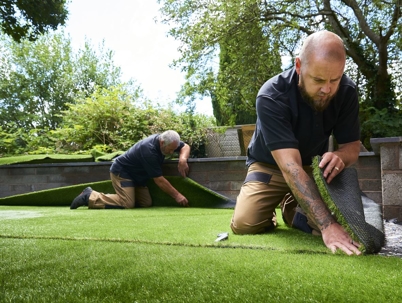As we become more conscious about the environment, opting for sustainable practices in many aspects of our lives, including home gardening, is natural. However, maintaining a lush, green lawn can significantly cost our planet’s resources. This is where the environmental advantages of artificial grass come in.
1. Water Conservation
A primary environmental advantage of artificial grass is water conservation. In many parts of the world, water scarcity is an ongoing challenge. According to the EPA, an average American household uses approximately 320 gallons of water per day, accounting for 30-70% of outdoor watering. Natural grass requires regular watering to remain healthy and green, whereas synthetic turf needs minimal irrigation, resulting in significant water savings. With artificial grass, homeowners can save up to 22,000 gallons of water each year, profoundly impacting the environment and reducing water bills.
2. Reduced Chemical Use
Maintaining a natural lawn can often involve harmful pesticides, herbicides, and fertilizers, which seep into the soil and contaminate groundwater. Artificial grass eliminates the need for these chemicals, reducing the risk of contamination. Moreover, a synthetic lawn doesn't require mower fuel, yet another chemical is eliminated from the maintenance process.
3. A Greener Lawn All Year Round
During the hot and dry months, natural lawns require abundant water and risk drying up and dying. Meanwhile, during winter, natural grass goes dormant and turns brown, requiring upkeep to regain its lush appearance. Artificial grass does not need any specific weather conditions to remain green, making it a more sustainable option, and its consistent appearance provides a beautiful backdrop for the garden or playground year-round.
4. Long-Term Durability
Natural grass is prone to wear and tear, especially during heavy use or harsh weather conditions. This often means replanting parts of the lawn, leading to additional land abandonment, soil erosion, and other environmental issues. Artificial grass, conversely, is highly durable and can withstand prolonged use without deteriorating. As a result, replacing natural lawns with artificial turf can significantly reduce waste while preserving green space.
5. Carbon Emission Reduction
Using mowers, trimmers, and leaf blowers to maintain a natural lawn leads to pollution since these machines use gas or electricity and produce carbon emissions. In contrast, artificial lawns require minimal upkeep and don't emit harmful pollutants. This means that replacing a natural lawn with synthetic turf can drastically reduce carbon emissions and contribute to a cleaner environment.
Artificial Grass Installation in Las Vegas, NV
At VanDorne Landscape and Design, we understand the importance of creating a beautiful and sustainable outdoor space that meets your specific needs. Our team of experts in Las Vegas, NV, is ready to help you explore the benefits of artificial grass and transform your landscape into an eco-friendly and low-maintenance haven. If you're interested in enhancing your property with artificial grass installation in Las Vegas or have any landscaping needs, contact us today at (702) 605-6442. Let us help you make your dream outdoor space a reality.

